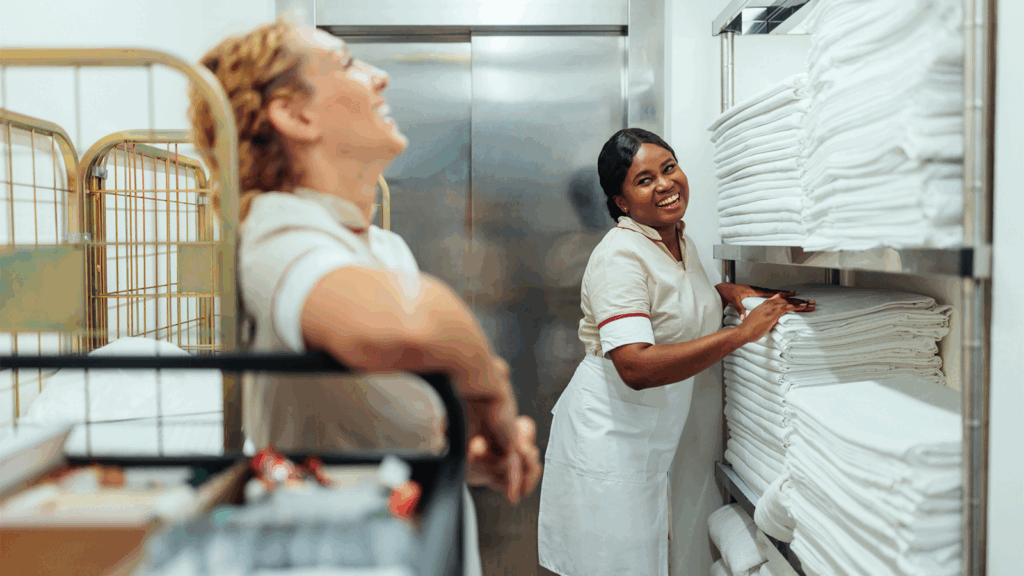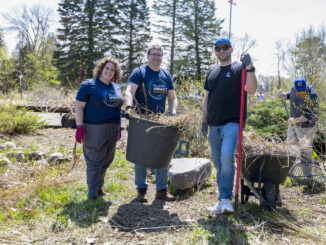In the glittering world of U.S. casino hotels, where neon lights and high-stakes games draw millions of visitors annually, success hinges on more than just the gaming floor. Behind the scenes, back-of-house (BOH) areas — kitchens, housekeeping stations, maintenance rooms, storage facilities, and employee lounges —form the operational heart of these sprawling resorts. Neglecting these spaces can lead to cascading issues: diminished employee performance, skyrocketing turnover, and ultimately, a hit to the bottom line. As the U.S. casino industry generates over $100 billion in revenue yearly, investing in ‘The Heart of the House’ isn’t just about employee welfare — it’s a smart business strategy for long-term profitability.
Back of House environments in casino hotels are uniquely demanding.
Employees in these areas, including cooks, cleaners, and technicians, often work long shifts in high-pressure settings. Unlike front-of-house roles that interact directly with guests, the ‘heart of the house staff handle the invisible labor that keeps the show running: preparing gourmet meals for all-night buffets, maintaining slot machines, and ensuring spotless suites for high-rollers. Poorly maintained BOH spaces (also referred to as heart of house) —like inadequate ventilation in steamy kitchens, dim lighting in storage areas, or cramped break rooms—can erode team member morale and efficiency. A study on hotel employees’ mental health, (Sciencedirect.com) highlights how BOH workers face distinct challenges, such as physical strain and isolation, which worsen without proper facilities. In casino contexts, this translates to slower service in restaurants or delayed room turnovers, directly impacting guest satisfaction and repeat visits.
One of the most compelling reasons to prioritize BOH maintenance is its direct link to employee turnover, a chronic issue plaguing the U.S. hospitality sector.
Harver.com studied that the hotel and motel industry report a staggering 73.8% turnover rate, with casinos often exceeding this due to irregular hours and intense demands. In casino restaurants, for instance, high BOH turnover correlates with perceived drops in service quality, as inexperienced staff struggle to maintain standards in buffets or fine-dining outlets. A UNLV study on Las Vegas casino eateries found that BOH instability leads to longer wait times and food inconsistencies, frustrating patrons and reducing tips—further fueling employee dissatisfaction. Nationally, turnover costs casinos thousands per employee in recruitment, training, and lost productivity, with estimates reaching $20,000 per lost worker in full-service settings, according to a Walden University study. For asset managers and owners, this churn disrupts operations in revenue-critical areas like food and beverage, which account for a growing share of casino profits amid competition from online gambling.
Physical work environments play a pivotal role here.
Research on Hilton Hotels shows that factors like proper lighting, temperature control, and ergonomic layouts in “the heart of house” areas boost employee satisfaction and productivity by up to 30%, reducing injury rates and stress. In U.S. casinos, where BOH teams handle everything from counting chips in secure “soft count” rooms to managing massive laundry loads, subpar conditions exacerbate burnout. A national survey of restaurant HR practices by Cornell University, applicable to casino dining, revealed that investing in better BOH facilities—such as ventilated kitchens and comfortable break areas—cuts turnover by nearly half, from 45% to 26%. In Atlantic City and Nevada, where unions like UNITE HERE advocate for worker rights, casinos ignoring these needs face strikes and reputational damage, as seen in recent labor disputes over unsafe working conditions during post-COVID recovery.
Beyond turnover, well-maintained “Heart of House” environments enhance overall performance and guest experiences.
Empowered BOH staff, supported by efficient spaces, contribute to faster service recovery—vital in casinos where a malfunctioning slot or delayed meal can sour a high-value player’s night. Quality of work life (QWL) studies in the casino industry underscore that positive BOH setups foster loyalty and innovation, leading to better food quality and maintenance uptime. For example, resorts like Encore Boston Harbor invest in modern BOH tech, such as automated inventory systems, to streamline operations and reduce employee fatigue, resulting in higher Net Promoter Scores from guests.
The economic stakes are high in the U.S. casino landscape, where tribal gaming alone generates $40 billion annually, and states like New Jersey and Pennsylvania compete fiercely. Neglecting BOH can undermine key metrics like Revenue Per Available Room (RevPAR) and Total Revenue Per Available Room (TRevPAR), as unhappy staff lead to operational inefficiencies. Conversely, strategic investments yield returns: ergonomic practices in housekeeping can boost retention and efficiency, cutting costs by 20-40%. Owners should integrate BOH upgrades into capital expenditure plans, using data from STR reports to benchmark against competitors.
So, maintaining BOH environments is essential for sustaining a motivated workforce, minimizing turnover, and delivering exceptional guest experiences. As we continue to review our business metrics, forward-thinking managers will view the “Heart of the House” not as a cost center but as a competitive edge. Chose to be ‘Heart Healthy’ and it will improve the overall ‘Health’ of your property, the morale of your team and your bottom line.
Next Step Action Points
- Conduct BOH Facility Assessments:
- Integrate BOH Upgrades into Capital Expenditure (CapEx):
- Implement Employee-Centric HR Practices:
- Leverage Technology for BOH Efficiency:
- Monitor Key Metrics:
Is your casino resort in need of a back of house, menu, or other F&B or hospitality audit or specific custom training? Wait no longer! Contact Raving today.





